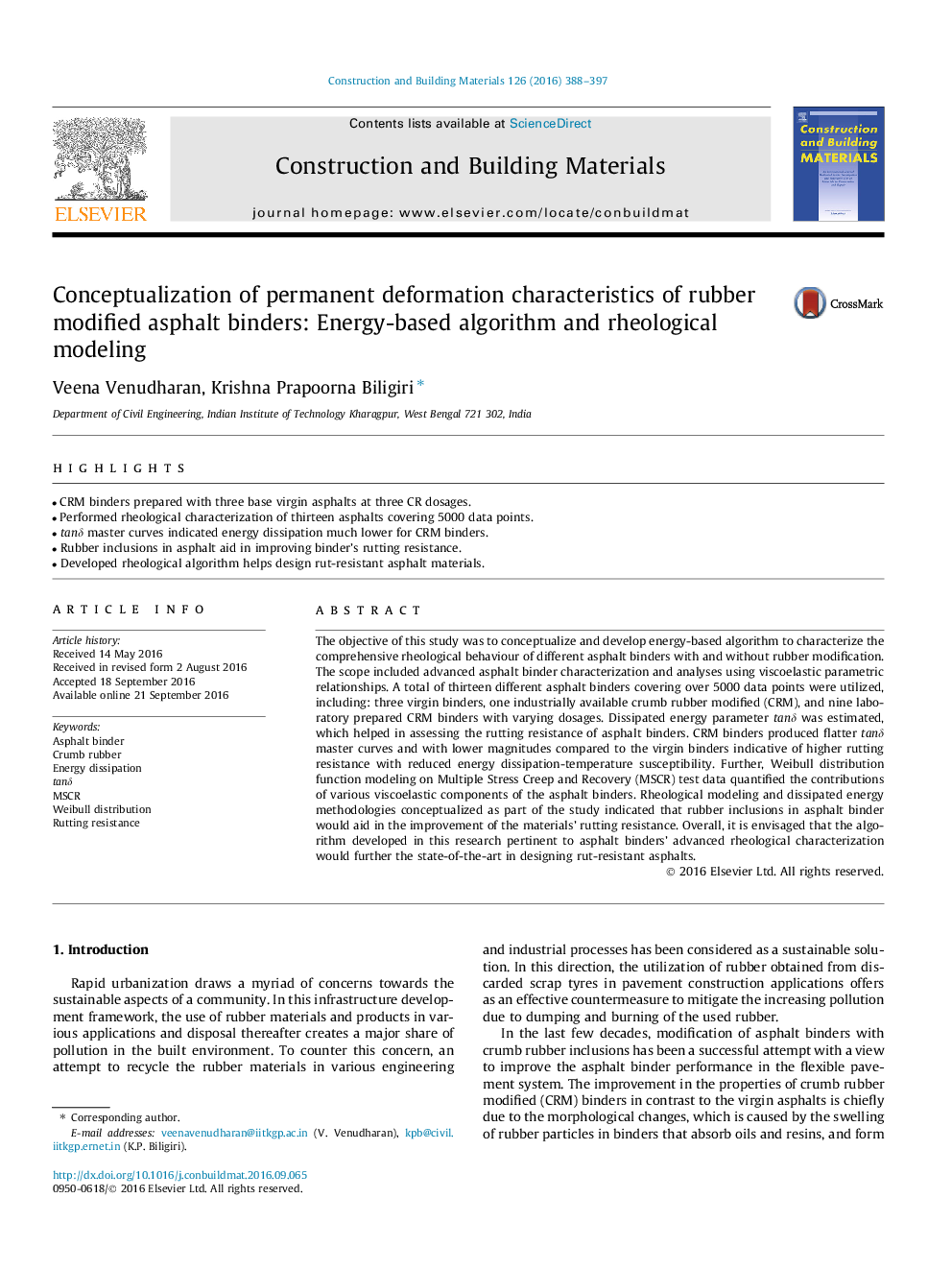| کد مقاله | کد نشریه | سال انتشار | مقاله انگلیسی | نسخه تمام متن |
|---|---|---|---|---|
| 6480890 | 1428780 | 2016 | 10 صفحه PDF | دانلود رایگان |
- CRM binders prepared with three base virgin asphalts at three CR dosages.
- Performed rheological characterization of thirteen asphalts covering 5000 data points.
- tanδ master curves indicated energy dissipation much lower for CRM binders.
- Rubber inclusions in asphalt aid in improving binder's rutting resistance.
- Developed rheological algorithm helps design rut-resistant asphalt materials.
The objective of this study was to conceptualize and develop energy-based algorithm to characterize the comprehensive rheological behaviour of different asphalt binders with and without rubber modification. The scope included advanced asphalt binder characterization and analyses using viscoelastic parametric relationships. A total of thirteen different asphalt binders covering over 5000 data points were utilized, including: three virgin binders, one industrially available crumb rubber modified (CRM), and nine laboratory prepared CRM binders with varying dosages. Dissipated energy parameter tanδ was estimated, which helped in assessing the rutting resistance of asphalt binders. CRM binders produced flatter tanδ master curves and with lower magnitudes compared to the virgin binders indicative of higher rutting resistance with reduced energy dissipation-temperature susceptibility. Further, Weibull distribution function modeling on Multiple Stress Creep and Recovery (MSCR) test data quantified the contributions of various viscoelastic components of the asphalt binders. Rheological modeling and dissipated energy methodologies conceptualized as part of the study indicated that rubber inclusions in asphalt binder would aid in the improvement of the materials' rutting resistance. Overall, it is envisaged that the algorithm developed in this research pertinent to asphalt binders' advanced rheological characterization would further the state-of-the-art in designing rut-resistant asphalts.
Journal: Construction and Building Materials - Volume 126, 15 November 2016, Pages 388-397
